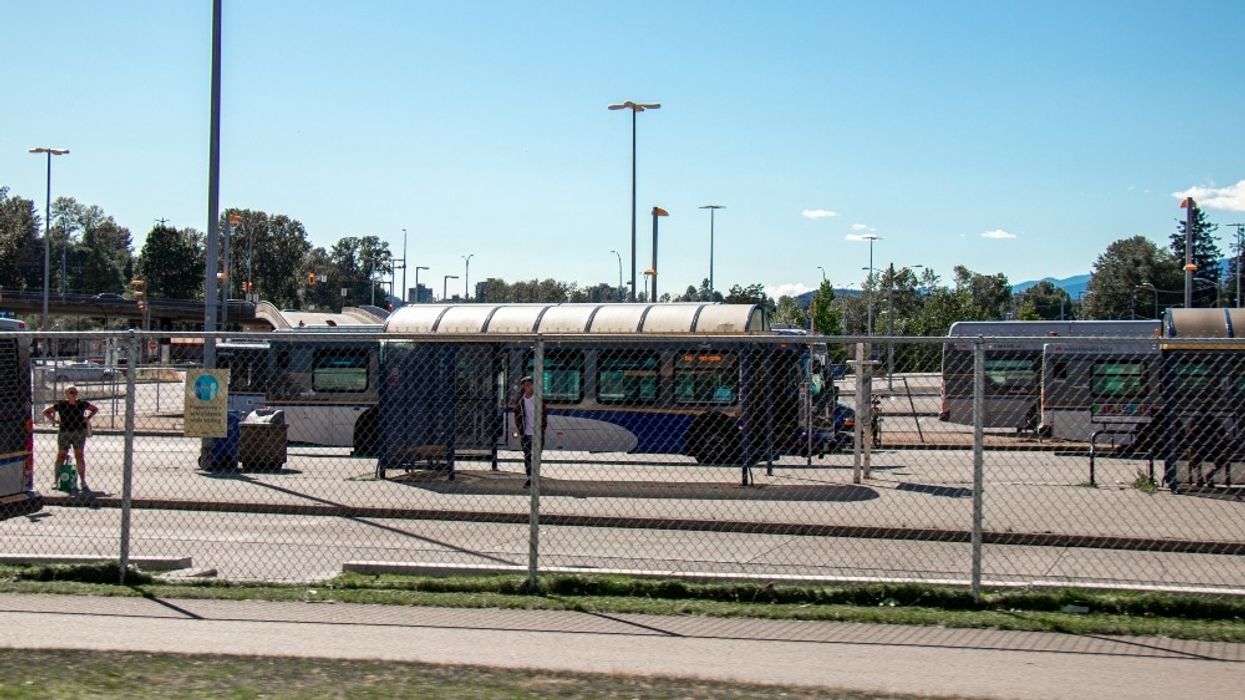TransLink has officially filed a Request for Expressions of Interest (RFEOI) seeking a team to complete a conceptual Master Development Plan for the large site surrounding Coquitlam Central Station.
The RFEOI was posted on November 9, with a deadline of January 6, and will "establish a vision for the development of a significant neighbourhood in the City of Coquitlam and the creation of a mobility hub" that "will inform subsequent phases of development planning and integration with transit facilities."
TransLink is seeking to retain a "multi-disciplinary" team capable of structural engineering, project administration or planning, architectural engineering, electrical engineering, building construction management, and traffic engineering.
The RFEOI seeks to gauge and gather interested and qualified parties before a Request For Proposals (RFP) is made at a later date to accept bids on contracts for the project.
In an email to STOREYS, TransLink confirmed the RFEOI and called the RFEOI a "first step [that] will allow us to explore the viability of the site."
The Site
Coquitlam Central SkyTrain Station is located on 2920 Barnet Highway, with Coquitlam Centre mall right across the street. The site was originally established as part of the Canadian Pacific Railway over a century ago, with access to the West Coast Express opening in 1995 and access to the SkyTrain's Millennium Line opening in 2016.
The Station has long had one of the biggest bus loops in the region, with 14 bus bays serviced by over 20 different bus routes. To accommodate that large volume of transit users, the site has long had a sprawling parking lot, one that's arguably much bigger than needed, especially considering the equally-sprawling 4,000-stall parking lot at Coquitlam Centre across the street.
TransLink Real Estate Development
No details about what the site could be developed into have been established, but context clues provide some hints at the possibilities. TransLink has been a champion of "transit-oriented communities" and design for over a decade now, and the RFEOI's allusion to turning the site into a "mobility hub" hints at this.
In a 2012 document outlining the principles of transit-oriented communities, TransLink described them as "places that, by their design, allow people to drive less and walk, cycle, and take transit more."
"In practice," TransLink said, "this means they concentrate higher-density, mixed-use, human-scale development around frequent transit stops and stations. They also provide well-connected and well-designed networks of streets, creating walking and cycling-friendly communities focused around frequent transit."
RELATED: Do SkyTrain Expansions Really Better Vancouver’s Affordable Housing Problem?
In June, TransLink also announced that it was launching a Real Estate Development Program, saying that they're hoping to gain new funding for transit services through development of "residential, commercial, or mixed-use developments near transit through partnerships with both the public and private sectors."
"We will still need to identify more long-term funding solutions, but this program will improve people’s access to transit, create more transit-oriented communities and generate new long-term revenue to help us improve and expand our system," TransLink CEO Kevin Quinn said at the time.
TransLink has already said they'll be taking this transit-oriented design approach to one of the stations of the upcoming Surrey-Langley SkyTrain Expansion. Existing examples include Marine Gateway, the bustling retail, residential, and office hub built around the Canada Line's Marine Drive Station.
While Marine Drive Station opened in the aughts, the surrounding Marine Gateway did not open until 2016. By 2019, Marine Drive Station was the Canada Line station that saw the sixth-most annual boardings (18th overall out the 53 stations across three lines), according to TransLink's 2019 Transit Service Performance Review, and had an 8.3% increase in ridership compared to the year before, which was the largest growth in ridership among Canada Line stations.
If that's what can be expected for Coquitlam Central, then this first step TransLink is taking could very well lead to a further-revitalized Coquitlam.


















